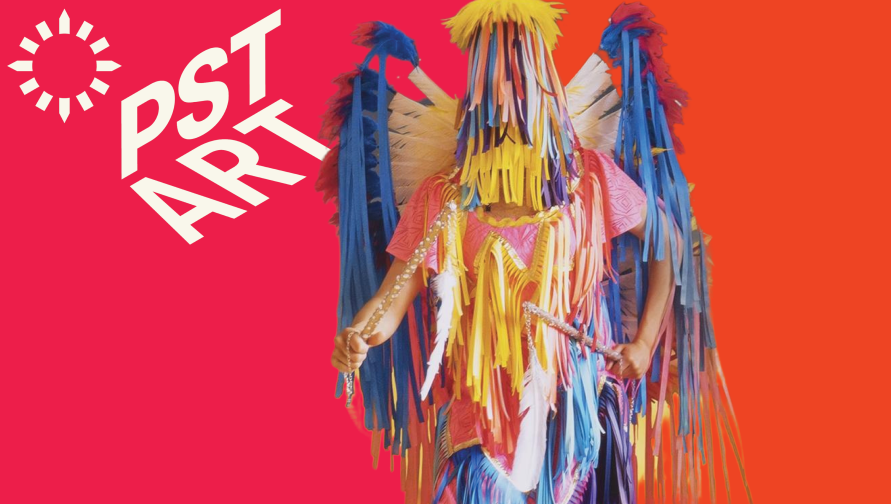
Southern California’s landmark arts event, PST ART (previously Pacific Standard Time), returns with more than 818 artists, 50 exhibitions and one main theme: Art & Science Collide. School of Humanities alumni have been involved in several PST exhibitions across Southern California, including exhibits at the Autry Museum of the American West (Amy Scott), Oceanside Museum of Art (Aaron Katzeman) and the Palm Springs Art Museum (Sharrissa Iqbal).
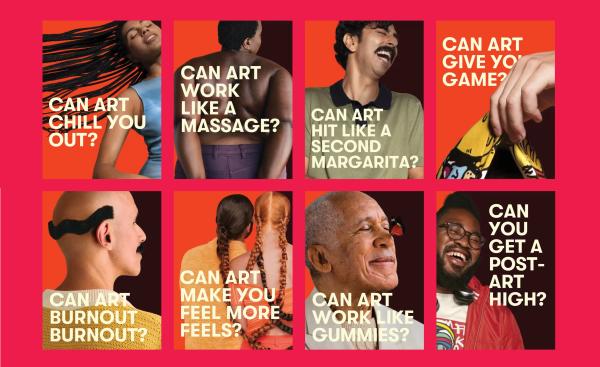
PST Art & Science Collide "creates opportunities for civic dialogue around some of the most urgent problems of our time by exploring past and present connections between art and science.” Project topics range from climate change and environmental justice to AI. Learn more about the Getty’s PST.
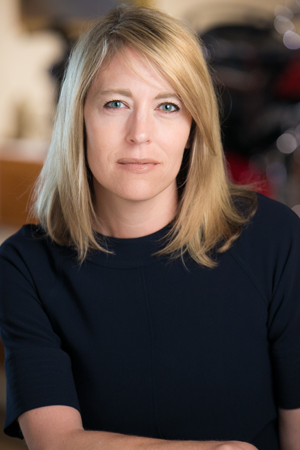
Amy Scott ‘13 (Ph.D., Visual Studies) | Vice President of Research and Interpretation and Marilyn B. and Calvin B. Gross Curator of Visual Arts, the Autry Museum of the American West
Future Imaginaries: Indigenous Art, Fashion, Technology and Out of Site: Survey Science and the Hidden West, both at the Autry Museum of the American West
Future Imaginaries explores the rise of Futurism in contemporary Indigenous art as a means of enduring colonial trauma, creating alternative futures and advocating for Indigenous technologies in a more inclusive present and sustainable future. Over 50 artworks are on display, some interspersed throughout the museum, creating unexpected encounters and dialogues between contemporary Indigenous creations and historic Autry works.
What was your role in curating Future Imaginaries?
I was the originating curator of the exhibition, which is to say I came up with the topic, wrote the grant proposals and assembled the curatorial team, including two Indigenous curators. Once we had funding and the team was in place, we began meeting regularly on Zoom, brainstorming sessions about the thematic concepts, artists and artworks that we found intriguing, powerful, relevant and capable of speaking to the overarching narrative as the show evolved. Then once we had a basic outline in place, we began reaching out to each and every artist on the list to share our ideas and listen to their thoughts on the role of futurism in their work, and how they saw themselves in dialogue with the other artists. Sometimes these conversations led us to new works, either that we were previously unaware of or that were created especially for the exhibition.
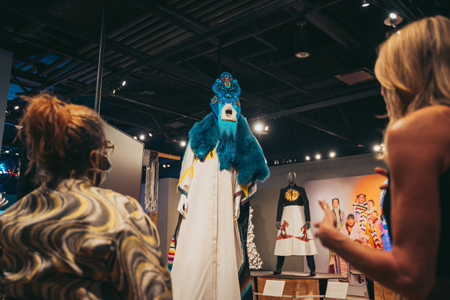
What do you hope viewers will walk away with after seeing the exhibit?
That Indigenous artists are not only active agents of the now, but that their ideas on what lies contain important clues to creating more socially just and environmentally sustainable futures from which we all stand to benefit. Another important concept is the power and relevance of Indigenous technologies and ancestral knowledge – real-world knowledge gained through intergenerational and lived experience of the specificities of specific places and the interdependent, ecological systems that define them. That if we could re-imagine our relationship to the living and non-living entities of our environment along the lines of kinship and responsibility (instead of resources and profit), the future becomes brighter for us all.
What's next for you? Projects you're excited about?
In addition to spending more time working on the research and interpretation component of my job, which includes developing interwoven interpretive strategies and oversight of programming, education and the library and archives of the museum, I’ll be launching a monographic book on Harry Fonseca (Nisenan Maidu, 1946-2006), whose estate is part of the Autry’s collection, and animating the Autry’s partnership with the Los Angeles County Museum of Art.
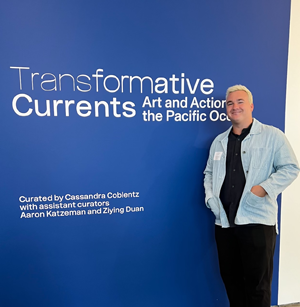
Aaron Katzeman ‘24 (Ph.D., Visual Studies) | Postdoctoral Fellow at the Getty Research Institute
Transformative Currents: Art and Action in the Pacific Ocean at the Oceanside Museum of Art
Transformative Currents is a multi-venue exhibition at the Oceanside Museum of Art, Orange County Museum of Art and Crystal Cove Conservancy, featuring 28 artists from across the Pacific region, including British Columbia, California, Mexico, Ecuador, Chile, Hawaii, Australia, Aotearoa New Zealand, Indonesia, Singapore, China and the Philippines.
Work in the exhibition addresses issues such as sea-level rise, coastal erosion, factory fishing, border infrastructures, offshore oil rigs, sand dredging, climate data collection, deep-sea mining technologies, military weapons testing, nuclear plants and the difficulty of international stewardship, among other concerns. Many artists collaborated with community organizations, scientists, institutions and activists in the process of making their work, which takes the form of sculpture, photography, video, sound, augmented reality, drawing and multimedia installation.
What was your role in co-curating Transformative Currents?
Organizing Transformative Currents: Art and Action in the Pacific Ocean as assistant curator (along with lead curator Cassandra Coblents and fellow assistant curator Ziying Duan) was a years-long process. We began researching in 2020 after receiving a two-year research grant from the Getty. We conducted countless studio visits with artists across the Pacific during this phase, which mostly took place on Zoom. We established a local advisory council of artists, activists and scientists as well as an international curatorial advisory council. The research phase culminated in an international symposium at the Orange County Museum of Art in 2022. We then received an implementation grant from the Getty, which provided the funds for the exhibition itself, including installation costs, technology expenses and production fees for the artists we commissioned to make new work.
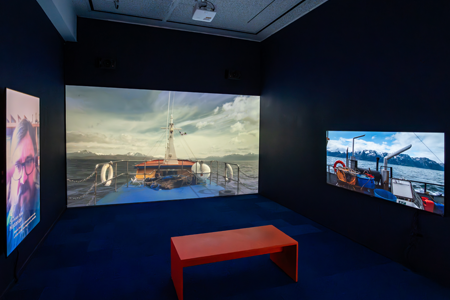
What do you hope viewers will walk away with after seeing the exhibit?
My hope is that viewers leave the exhibition with a greater awareness of the oceanic issues we face in Southern California, a comparative framework for understanding similar issues faced elsewhere and newfound historical insight into how such issues are rooted in global processes of colonialism, capitalism and militarism.
What’s next for you? Upcoming projects you’re excited about?
The exhibition catalog (published by X Artists' Books) will be released in January, with a celebration event at the Oceanside Museum of Art. The catalog features curatorial essays, invited contributions, artist profiles and excerpts from the presentations at the 2022 symposium. This academic year, I'm a postdoctoral fellow at the Getty Research Institute for its theme of Extinction, where I'm working on a book project on art and social movements about land, rather than the ocean. I've found undertaking both projects to be incredibly complementary.
Interested in reading more from the School of Humanities? Sign up for our monthly newsletter.
Main image: Courtesy of the Autry Museum of the American West
